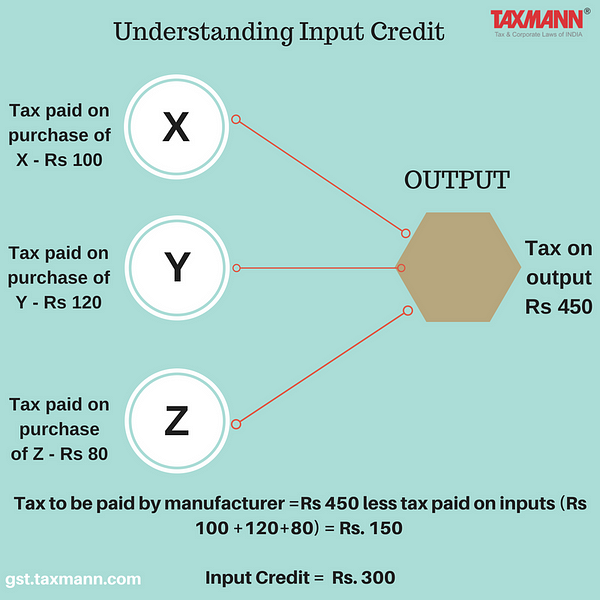What is Input Tax Credit Under GST? How does Input Tax Credit Mechanism work?
- Blog|GST & Customs|
- 2 Min Read
- By Taxmann
- |
- Last Updated on 28 November, 2023
GST Input Tax Credit:

Definitions What are inputs for a Business?
The inputs for a business can be divided into three parts:
GST Input Tax Credit provides complete guidance on Input Tax Credit, Refund of Input Tax Credit & Export issues relating to Input Tax Credit. It also incorporates various issues related to Input Tax Credit such as availment, reversal, refund, etc.
2.1 Input Services:
Input Services are services which are used or intended to be used in the course or furtherance of business. CGST Act has given a very broad based definition for Input Service. Any service used in the course or furtherance of business, would be classified as Input Service.
2.2 Capital Goods:
The definition of Capital Goods is very broad and contains only two conditions which are as follows:
-
- Capital Goods are goods which have been capitalized in the books of account of the person claiming the credit.
- Capital goods are goods which are used or intended to be used in the course or furtherance of business.
2.3 Input Goods:
Input means any goods other than capital goods and which are used or intended to be used in the course or furtherance of business. It is again a very broad based definition and any goods used in the course of furtherance of business, would be classified as Inputs.
Related Articles
Disclaimer: The content/information published on the website is only for general information of the user and shall not be construed as legal advice. While the Taxmann has exercised reasonable efforts to ensure the veracity of information/content published, Taxmann shall be under no liability in any manner whatsoever for incorrect information, if any.

Taxmann Publications has a dedicated in-house Research & Editorial Team. This team consists of a team of Chartered Accountants, Company Secretaries, and Lawyers. This team works under the guidance and supervision of editor-in-chief Mr Rakesh Bhargava.
The Research and Editorial Team is responsible for developing reliable and accurate content for the readers. The team follows the six-sigma approach to achieve the benchmark of zero error in its publications and research platforms. The team ensures that the following publication guidelines are thoroughly followed while developing the content:
- The statutory material is obtained only from the authorized and reliable sources
- All the latest developments in the judicial and legislative fields are covered
- Prepare the analytical write-ups on current, controversial, and important issues to help the readers to understand the concept and its implications
- Every content published by Taxmann is complete, accurate and lucid
- All evidence-based statements are supported with proper reference to Section, Circular No., Notification No. or citations
- The golden rules of grammar, style and consistency are thoroughly followed
- Font and size that’s easy to read and remain consistent across all imprint and digital publications are applied





